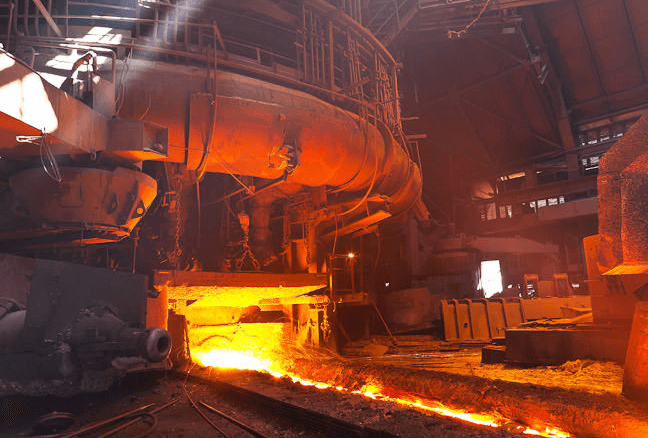
Steel is the backbone of modern infrastructure, used in everything from skyscrapers to automobiles. But have you ever wondered what goes into making high-quality steel?
Two primary raw materials drive steel production: Pig Iron and Sponge Iron. While both serve as crucial inputs, one of them holds a clear edge. Spoiler alert—Pig Iron takes the lead! But why? Let’s break it down.
Understanding the Basics
Before diving into the debate, let’s get a quick overview of both materials.
What is Pig Iron?
Pig Iron is a high-carbon iron alloy produced by smelting iron ore in a blast furnace. It contains about 3.5-4.5% carbon, along with silicon, manganese, sulfur, and phosphorus. It serves as the primary raw material in steelmaking and cast iron manufacturing.
What is Sponge Iron?
Sponge Iron, also known as Direct Reduced Iron (DRI), is created by reducing iron ore without melting it. The process typically involves using natural gas or coal to strip away oxygen, leaving behind a porous, iron-rich material with around 84-95% metallic iron but lower carbon content.
The Showdown: Pig Iron vs. Sponge Iron
Now, let’s compare both materials across key factors that influence steel production.
1. Purity & Composition
- Pig Iron is highly pure, with a consistent and well-defined chemical composition. The controlled production process ensures that unwanted impurities are minimal.
- Sponge Iron, on the other hand, can have higher levels of impurities, such as phosphorus and sulfur, depending on the raw materials used.
Winner: Pig Iron – Higher purity means better-quality steel.
2. Carbon Content & Steel Strength
- Pig Iron has a higher carbon content (3.5-4.5%), making it a superior feedstock for steel production. Carbon plays a crucial role in strengthening steel.
- Sponge Iron has a lower carbon content, meaning additional carbon sources (like coke) must be added during steelmaking.
Winner: Pig Iron – More carbon, more strength!
3. Energy Efficiency in Steelmaking
- Pig Iron is already molten when used in steel production, leading to lower energy consumption during refining.
- Sponge Iron needs to be melted first, requiring more energy and increasing production costs.
Winner: Pig Iron – Saves energy, saves money!
4. Production Cost & Economic Feasibility
- Sponge Iron plants require large amounts of natural gas or coal, making them vulnerable to price fluctuations.
- Pig Iron production, though requiring blast furnaces, benefits from efficient scaling and bulk production.
Winner: Pig Iron – More cost-effective in the long run.
5. Structural Quality of Steel
- Steel made from Pig Iron is denser and more uniform, leading to better mechanical properties.
- Sponge Iron-based steel may have porosity issues, affecting its strength and durability.
Winner: Pig Iron – Better structural integrity means longer-lasting steel!
6. Environmental Impact
- Sponge Iron has an edge in terms of direct emissions, as it doesn’t require a blast furnace.
- However, Pig Iron can be produced using scrap recycling and efficient technologies, reducing its overall carbon footprint.
Winner: Tie – Newer, greener Pig Iron production methods level the playing field.
Fun Facts About Pig Iron
- Did you know? The term “Pig Iron” comes from the traditional casting method, where molten iron was poured into a branching mold resembling a litter of piglets suckling a sow.
- Stronger Bridges & Skyscrapers – Most iconic structures like the Eiffel Tower started with Pig Iron-based steel.
- Faster Melting Time – Because it’s already in a semi-liquid state, Pig Iron melts 30% faster than Sponge Iron in steel furnaces.
The Verdict: Pig Iron Wins!
If your goal is stronger, more durable, and cost-efficient steel, Pig Iron is the undisputed champion. From higher purity and carbon content to better structural integrity and energy efficiency, it outperforms Sponge Iron on multiple fronts.
Steelmakers, Take Note!
At Anupam Fuels, we supply premium-grade Pig Iron tailored to meet industrial requirements. Whether you’re in construction, automotive, or heavy machinery, Pig Iron guarantees superior steel production.
Have questions? Let’s talk! Contact us today to discuss how Pig Iron can optimize your steel production process.
Upgrade your steel. Upgrade with Pig Iron!
